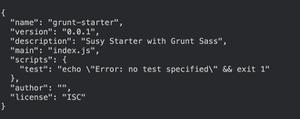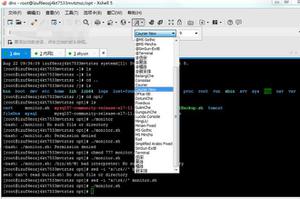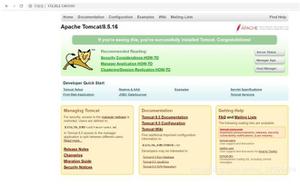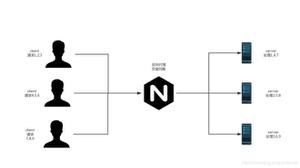SpringBoot启动选择ApplicationContext

- 常规方式
ConfigurableApplicationContext context = SpringApplication.run(CreditBootstrap.class, args); - 可设置参数
ConfigurableApplicationContext context = new SpringApplicationBuilder(CbmsManageApp.class).web(WebApplicationType.SERVLET).run(args);
返回一个ConfigurableApplicationContext对象
- org.springframework.context.annotation.AnnotationConfigApplicationContext
- org.springframework.boot.web.servlet.context.AnnotationConfigServletWebServerApplicationContext 在支持SERVLET模式下启用。
(不同版本不同,当前是spring-boot-2.1.5.RELEASE)
加载配置
启动先加载bootstrap.yml,从远端获取application.yml覆盖本地。
若指定scanBasePackages(包及子包下)则扫描指定路径,否则默认加载启动main方法类的包路径。
@SpringBootApplication(exclude = { DataSourceAutoConfiguration.class }, scanBasePackages={"com.noob.mics"})配置化启用装配
#调度中心配置xxl:
job:
enable: true
@Configuration@ConditionalOnProperty(prefix = "xxl.job", name = "enable", havingValue = "true" , matchIfMissing = false)
public class XxlJobConfiguration {
- matchIfMissing: 缺少该配置属性时是否可以加载。如果为true,没有该配置属性时也会正常加载;反之则不会生效
- havingValue: 与name组合使用,比较获取到的属性值与havingValue给定的值是否相同,相同才加载配置。 如果havingValue未指定值,默认情况下在属性配置中设置的值为true则生效(如上配置),false则不生效。
@ConfigurationProperties 需要与@EnableConfigurationProperties 合用。 如果@ConfigurationProperties没有与@Component并用,则@EnableConfigurationProperties需要额外设置value的值来指定属性类
@EnableConfigurationProperties({ServerProperties.class})@ConfigurationProperties(prefix = "server", ignoreUnknownFields = true)
public class ServerProperties {
ApplicationContext的选择
下文以 spring-boot-2.1.5.RELEASE 为例。不同版本下的具体实现与构建的ApplicationContext种类都不一样。
重点关注 WebApplicationType 与 SpringApplication
WebApplicationType.deduceFromClasspath() 决定容器环境类型 (默认是:WebApplicationType.SERVLET)
private static final String[] SERVLET_INDICATOR_CLASSES = { "javax.servlet.Servlet", "org.springframework.web.context.ConfigurableWebApplicationContext" };
private static final String WEBMVC_INDICATOR_CLASS = "org.springframework.web.servlet.DispatcherServlet";
private static final String WEBFLUX_INDICATOR_CLASS = "org.springframework.web.reactive.DispatcherHandler";
private static final String JERSEY_INDICATOR_CLASS = "org.glassfish.jersey.servlet.ServletContainer";
private static final String SERVLET_APPLICATION_CONTEXT_CLASS = "org.springframework.web.context.WebApplicationContext";
private static final String REACTIVE_APPLICATION_CONTEXT_CLASS = "org.springframework.boot.web.reactive.context.ReactiveWebApplicationContext";
static WebApplicationType deduceFromClasspath() {
if (ClassUtils.isPresent(WEBFLUX_INDICATOR_CLASS, null)
&& !ClassUtils.isPresent(WEBMVC_INDICATOR_CLASS, null)
&& !ClassUtils.isPresent(JERSEY_INDICATOR_CLASS, null)) {
return WebApplicationType.REACTIVE;
}
for (String className : SERVLET_INDICATOR_CLASSES) {
if (!ClassUtils.isPresent(className, null)) {
return WebApplicationType.NONE;
}
}
return WebApplicationType.SERVLET;
}
SpringApplication.run() -> SpringApplication.createApplicationContext() : 依据WebApplicationType类型来选择最终的ContextClass。
/** * 非SERVLET模式默认
*/
public static final String DEFAULT_CONTEXT_CLASS = "org.springframework.context.annotation.AnnotationConfigApplicationContext";
/**
* SERVLET模式下默认
*/
public static final String DEFAULT_SERVLET_WEB_CONTEXT_CLASS = "org.springframework.boot.web.servlet.context.AnnotationConfigServletWebServerApplicationContext";
/**
* The class name of application context that will be used by default for reactive web
* environments.
*/
public static final String DEFAULT_REACTIVE_WEB_CONTEXT_CLASS = "org.springframework.boot.web.reactive.context.AnnotationConfigReactiveWebServerApplicationContext";
protected ConfigurableApplicationContext createApplicationContext() {
Class<?> contextClass = this.applicationContextClass;
if (contextClass == null) {
try {
switch (this.webApplicationType) {
case SERVLET:
contextClass = Class.forName(DEFAULT_SERVLET_WEB_CONTEXT_CLASS);
break;
case REACTIVE:
contextClass = Class.forName(DEFAULT_REACTIVE_WEB_CONTEXT_CLASS);
break;
default:
contextClass = Class.forName(DEFAULT_CONTEXT_CLASS);
}
}
catch (ClassNotFoundException ex) {
throw new IllegalStateException(
"Unable create a default ApplicationContext, please specify an ApplicationContextClass", ex);
}
}
return (ConfigurableApplicationContext) BeanUtils.instantiateClass(contextClass);
}
如果有需要设置启动的相关属性,可以通过SpringApplicationBuilder的contextClass、web 等方法来指定SpringApplication的内部变量值
public SpringApplicationBuilder web(WebApplicationType webApplicationType) { this.application.setWebApplicationType(webApplicationType);
return this;
}
public SpringApplicationBuilder contextClass(
Class<? extends ConfigurableApplicationContext> cls) {
this.application.setApplicationContextClass(cls);
return this;
}
public void setBanner(Banner banner) {
this.banner = banner;
}
... ...
以上是 SpringBoot启动选择ApplicationContext 的全部内容, 来源链接: utcz.com/z/516372.html









